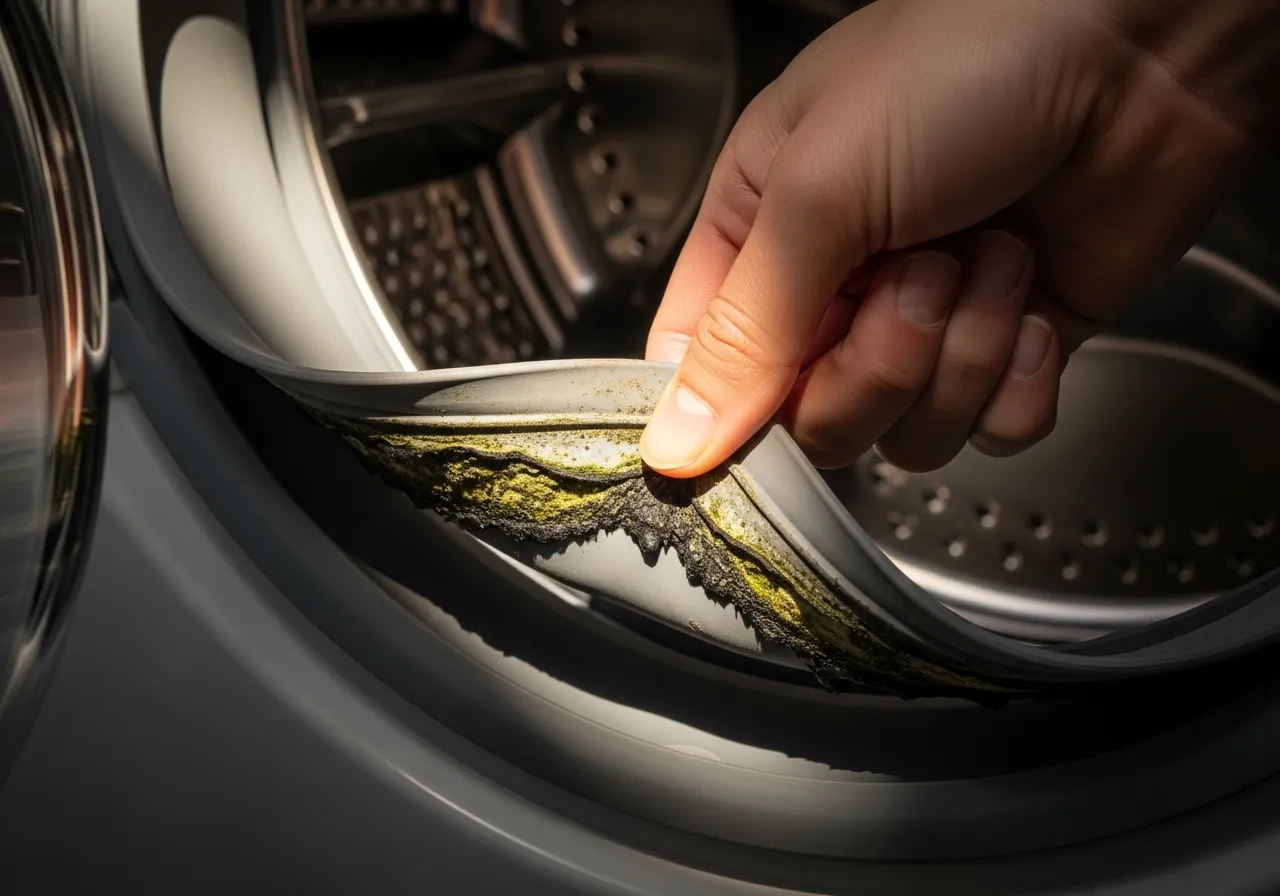
4. Refresh and Sanitize Your Washing Machine
Just like the dishwasher, your washing machine needs a regular cleaning to perform its best. Detergent residue, fabric softener buildup, and minerals from hard water can create a grimy film inside the drum and hoses. This buildup can lead to musty smells that transfer to your “clean” laundry. This is especially true for high-efficiency (HE) front-loading machines, where moisture can get trapped in the door’s rubber gasket, creating a perfect environment for mildew. A vinegar cleaning cycle is a frugal and effective way to combat this.
Step-by-Step Guide for Front-Loading Machines:
Step 1: Clean the Gasket. The rubber seal around the door is the main trouble spot in front-loaders. Mix a solution of equal parts white vinegar and water. Dip a microfiber cloth in the solution and gently pull back the gasket. Wipe away any grime, hair, or mildew you find hiding in the folds. For stubborn spots, you can use a soft-bristled brush, but be gentle to avoid damaging the seal.
Step 2: Clean the Detergent Dispenser. Slide out the detergent drawer. If possible, remove it completely and soak it in a basin of warm water and vinegar for about 15-20 minutes. Use a small brush to scrub away any caked-on residue before rinsing it, drying it, and returning it to the machine.
Step 3: Run the Cleaning Cycle. Pour two cups of distilled white vinegar directly into the detergent dispenser. Run the washing machine on its longest, hottest water cycle. Many modern machines have a dedicated “Clean Washer” or “Tub Clean” cycle; use this if available. The hot water and vinegar will work together to flush out buildup from the drum and internal hoses.
Step-by-Step Guide for Top-Loading Machines:
The process for a top-loader is even simpler.
Step 1: Fill the Drum. Set your machine to its largest load size and hottest water setting. Let the drum fill completely with water.
Step 2: Add Vinegar and Agitate. Once the tub is full, add four cups of distilled white vinegar. Close the lid and let the machine agitate for a few minutes to mix the vinegar into the water thoroughly.
Step 3: Let it Soak. Pause the cycle and let the hot vinegar water sit in the drum for at least one hour. This extended soak is key to dissolving the stubborn soap scum and mineral deposits clinging to the inside of the tub.
Step 4: Complete the Cycle. After the hour is up, resume the cycle and let it complete fully, draining and spinning as usual.
For both types of machines, you can use a cloth dampened with your vinegar-water solution to wipe down the exterior, lid, and control panel. To keep your machine fresh, leave the door or lid ajar between uses to allow air to circulate and the drum to dry out completely. Aim to run a vinegar cleaning cycle once a month.

















